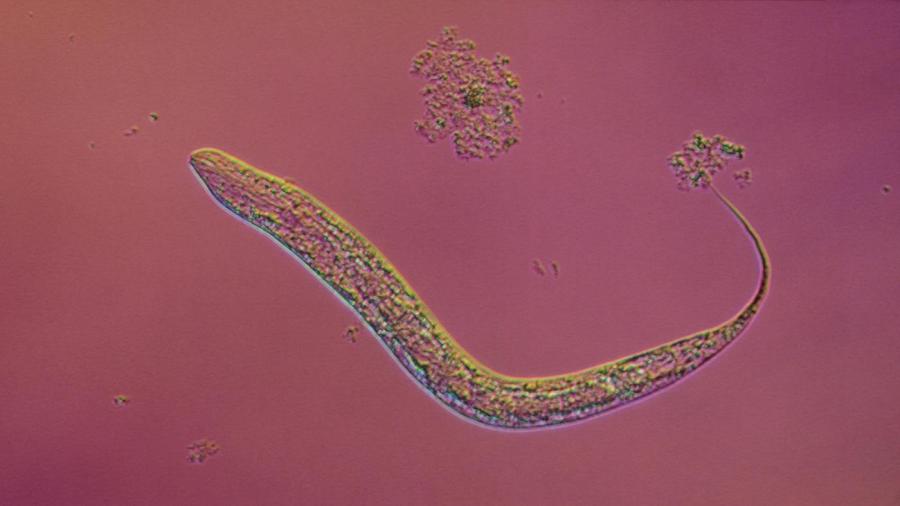What Is the Life Cycle of a Tapeworm?

The life cycle of a tapeworm starts as an egg, which is consumed and stored by an invertebrate. The invertebrate is then consumed by a vertebrate host in which the tapeworm develops and breeds. Some exceptions to this general pattern exist, such as when eggs are retained and hatch within the vertebrate host. Otherwise, fertilized eggs or body segments loaded with fertilized eggs are excreted for invertebrates to consume.
Tapeworms are long, flat worms made of multiple segments, each of which contains both male and female sex organs. They usually live in a vertebrate’s digestive tract, growing new segments from the head down over time. As each segment ages, it becomes laden with fertilized eggs and is eventually shed to be eliminated with feces.
Tapeworms are simple animals and are totally reliant on their hosts for survival. They have no digestive tract and instead absorb nutrients through their outer coating, which is textured for greater surface area. Nutrients are then distributed through their tissues via diffusion. The most common hosts for these organisms are rodents, but some species infest humans and other organisms. They compete directly with their hosts for the nutrients passing through the intestines, and in severe infestations, they can prevent almost all nutrient absorption by the host.





